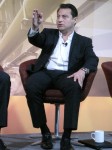Hidden Costs Provide Hidden Opportunities
Point: When choosing areas to target for process innovations, consider the complementary – not just direct – costs and benefits
Story: Companies naturally look for a satisfactory return on their investment when they make process improvements. But, sometimes the way they analyze costs and returns can blind them to significant gains. For example, in most regions, water is cheap. Making investments to reduce water usage may be laudable from an environmental standpoint, but it’s often hard to justify on strictly financial terms if one only takes the nominal cost of the water into account. However, water carries complementary costs associated with its usage. For example, the total cost water usage includes the costs of waste water disposal, chemical treatment from manufacturing processes, energy use associated with heating and cooling it, and so on. These associated costs may total as much as 100 times the nominal cost of water, according to McKinsey & Co, who calls these associated costs “carrier costs.”
Let’s take a look at an IBM plant in Burlington, Vermont to see the carrier costs of water and how they can be reduced. The IBM-Burlington plant saved over $740,000 in water costs annually, and another $2.3 million in energy costs, by being more aware of its water usage patterns. Most of the changes that the IBM-Burlington plant made to achieve its savings weren’t rocket science, which makes them all the more exciting because it means that such savings are attainable by others.
First, when IBM pumped water to its factories, it took water out of frigid Lake Champlain. For 50 years, IBM pumped incoming water and heated it so that it could be used. Yet in another factory on the same corporate campus, IBM chilled water in 13 two-story tall chillers to make it cold, even in winter. By instead routing the incoming cold water directly to the areas that needed chilling, IBM now gets “free” cold. Moreover, the industrial process that needs the cold water heats up that water without needing to use electricity. By using Vermont’s outdoor cold temperatures, which are rarely above freezing during the winter months, IBM makes cold water during the winter, again for “free” without needing to using electricity to run the chillers.
Similarly, a pulp-and-paper company achieved savings when it examined its water use and the heat energy lost in cooling process. By storing water in a different way, recapturing heat from condensation processes and reducing the amount of steam consumed by boilers, the company reduced total operating expenses by 2.5 percent.
Action:
- Identify the associated (“carrier”) costs of using a staple like water.
- Target processes for improvement in the way water is stored, heated, cooled, or treated for manufacturing or internal use.
- Install sensors that monitor water temperature, contamination, pressure, etc. (Excess water pressure, for example, can cause pipes to leak or burst.)
- Coordinate and cross-connect the multiple uses of the water to reduce the costs of heating, cooling, and treatment (e.g., let the “waste heat” from one process serve to prewarm water used in another process).
For more information:
“Measuring the Real Cost of Water,” McKinsey Quarterly, March 2013
Charles Fishman, The Big Thirst: The Secret Life and Turbulent Future of Water.
Comments Off on Hidden Costs Provide Hidden OpportunitiesCase study, How-to










